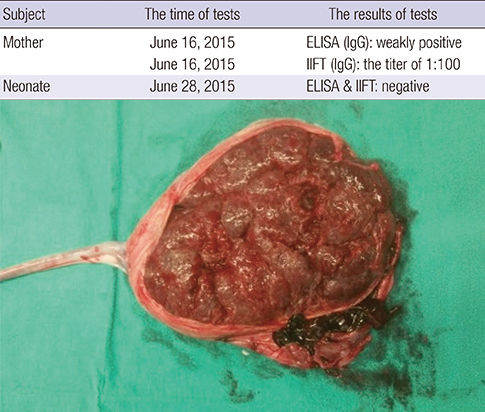1. Hardy JM, Azarowicz EN, Mannini A, Medearis DN Jr, Cooke RE. The effect of Asian influenza on the outcome of pregnancy, Baltimore, 1957–1958. Am J Public Health Nations Health. 1961; 51:1182–1188.
2. Cho SY, Kang JM, Ha YE, Park GE, Lee JY, Ko JH, Lee JY, Kim JM, Kang CI, Jo IJ, et al. MERS-CoV outbreak following a single patient exposure in an emergency room in South Korea: an epidemiological outbreak study. Lancet. 2016; 388:994–1001.
3. Hsieh YH. 2015 Middle East Respiratory Syndrome Coronavirus (MERS-CoV) nosocomial outbreak in South Korea: insights from modeling. PeerJ. 2015; 3:e1505.
5. Ko JH, Lee JY, Baek JY, Seok H, Park GE, Lee JY, Cho SY, Ha YE, Kang CI, Kang JM, et al. Serologic evaluation of MERS screening strategy for healthcare personnel during a hospital-associated outbreak. Infect Control Hosp Epidemiol. 2017; 38:234–238.
6. Zaki AM, van Boheemen S, Bestebroer TM, Osterhaus AD, Fouchier RA. Isolation of a novel coronavirus from a man with pneumonia in Saudi Arabia. N Engl J Med. 2012; 367:1814–1820.
7. Al-Hameed F, Wahla AS, Siddiqui S, Ghabashi A, Al-Shomrani M, Al-Thaqafi A, Tashkandi Y. Characteristics and outcomes of Middle East Respiratory Syndrome Coronavirus patients admitted to an intensive care unit in Jeddah, Saudi Arabia. J Intensive Care Med. 2016; 31:344–348.
8. Choi WS, Kang CI, Kim Y, Choi JP, Joh JS, Shin HS, Kim G, Peck KR, Chung DR, Kim HO, et al. Clinical presentation and outcomes of Middle East Respiratory Syndrome in the Republic of Korea. Infect Chemother. 2016; 48:118–126.
9. Ki M. 2015 MERS outbreak in Korea: hospital-to-hospital transmission. Epidemiol Health. 2015; 37:e2015033.
10. Lee J. Better understanding on MERS Corona Virus outbreak in Korea. J Korean Med Sci. 2015; 30:835–836.
11. Madani TA. Case definition and management of patients with MERS Coronavirus in Saudi Arabia. Lancet Infect Dis. 2014; 14:911–913.
12. Alserehi H, Wali G, Alshukairi A, Alraddadi B. Impact of Middle East Respiratory Syndrome Coronavirus (MERS-CoV) on pregnancy and perinatal outcome. BMC Infect Dis. 2016; 16:105.
13. Assiri A, Abedi GR, Al Masri M, Bin Saeed A, Gerber SI, Watson JT. Middle East Respiratory Syndrome Coronavirus infection during pregnancy: a report of 5 cases from Saudi Arabia. Clin Infect Dis. 2016; 63:951–953.
14. Malik A, El Masry KM, Ravi M, Sayed F. Middle East Respiratory Syndrome Coronavirus during pregnancy, Abu Dhabi, United Arab Emirates, 2013. Emerg Infect Dis. 2016; 22:515–517.
15. Payne DC, Iblan I, Alqasrawi S, Al Nsour M, Rha B, Tohme RA, Abedi GR, Farag NH, Haddadin A, Al Sanhouri T, et al. Stillbirth during infection with Middle East Respiratory Syndrome Coronavirus. J Infect Dis. 2014; 209:1870–1872.
16. Drosten C, Meyer B, Müller MA, Corman VM, Al-Masri M, Hossain R, Madani H, Sieberg A, Bosch BJ, Lattwein E, et al. Transmission of MERS-coronavirus in household contacts. N Engl J Med. 2014; 371:828–835.
17. Payne DC, Iblan I, Rha B, Alqasrawi S, Haddadin A, Al Nsour M, Alsanouri T, Ali SS, Harcourt J, Miao C, et al. Persistence of antibodies against Middle East Respiratory Syndrome Coronavirus. Emerg Infect Dis. 2016; 22:1824–1826.
18. Durai P, Batool M, Shah M, Choi S. Middle East Respiratory Syndrome Coronavirus: transmission, virology and therapeutic targeting to aid in outbreak control. Exp Mol Med. 2015; 47:e181.
19. Milne-Price S, Miazgowicz KL, Munster VJ. The emergence of the Middle East Respiratory Syndrome Coronavirus. Pathog Dis. 2014; 71:121–136.







 PDF
PDF ePub
ePub Citation
Citation Print
Print




 XML Download
XML Download